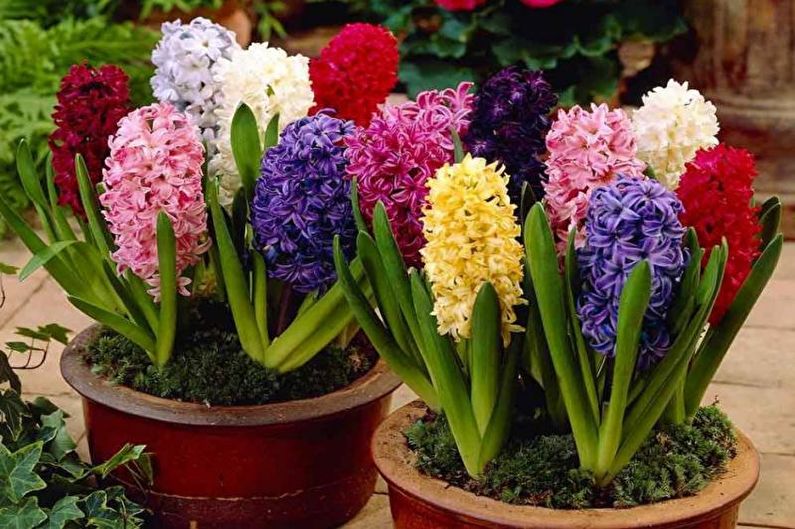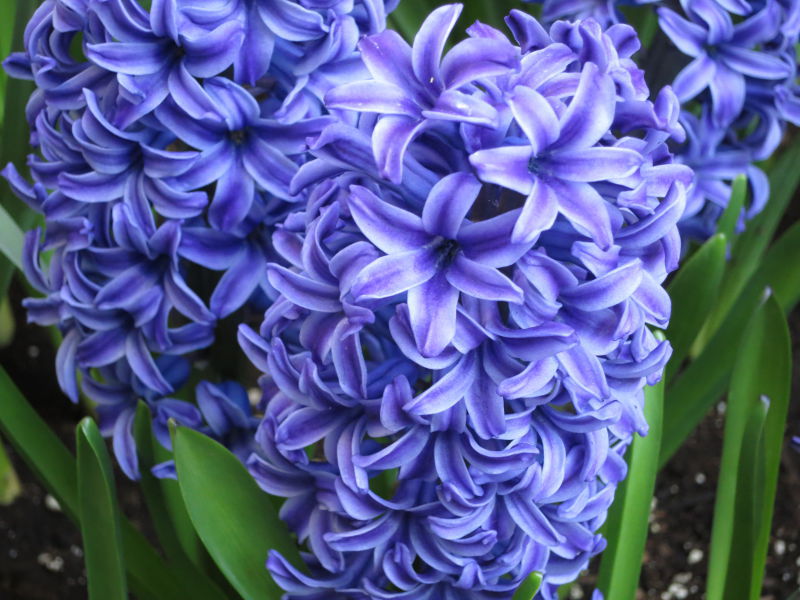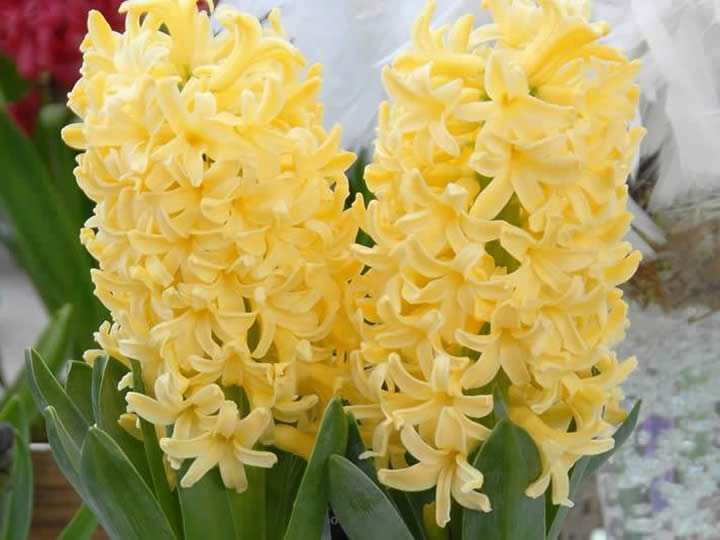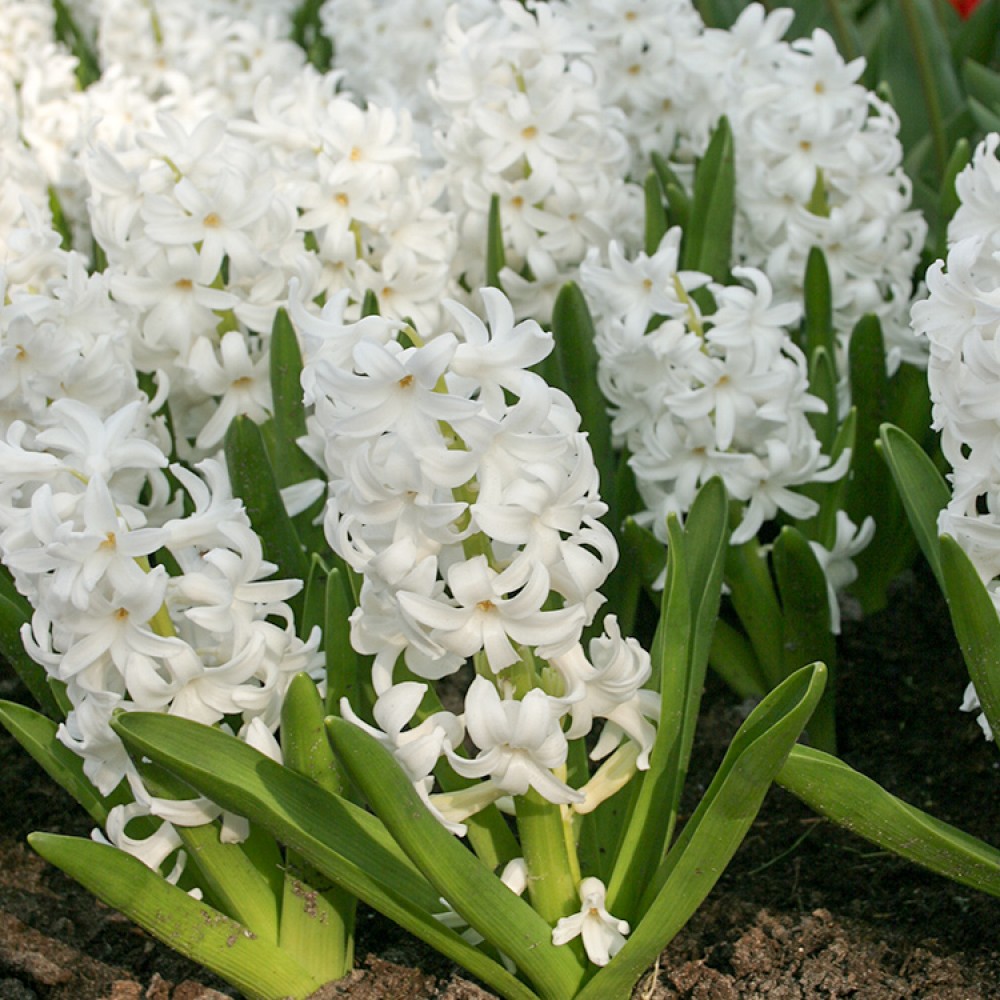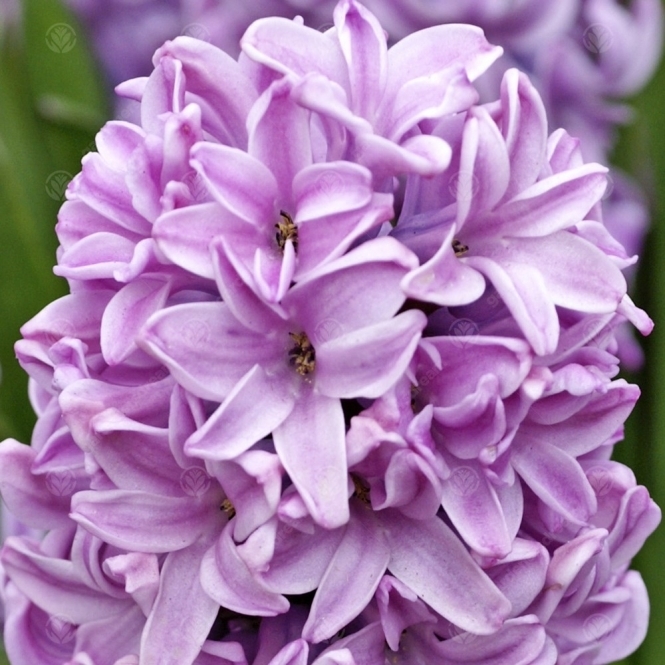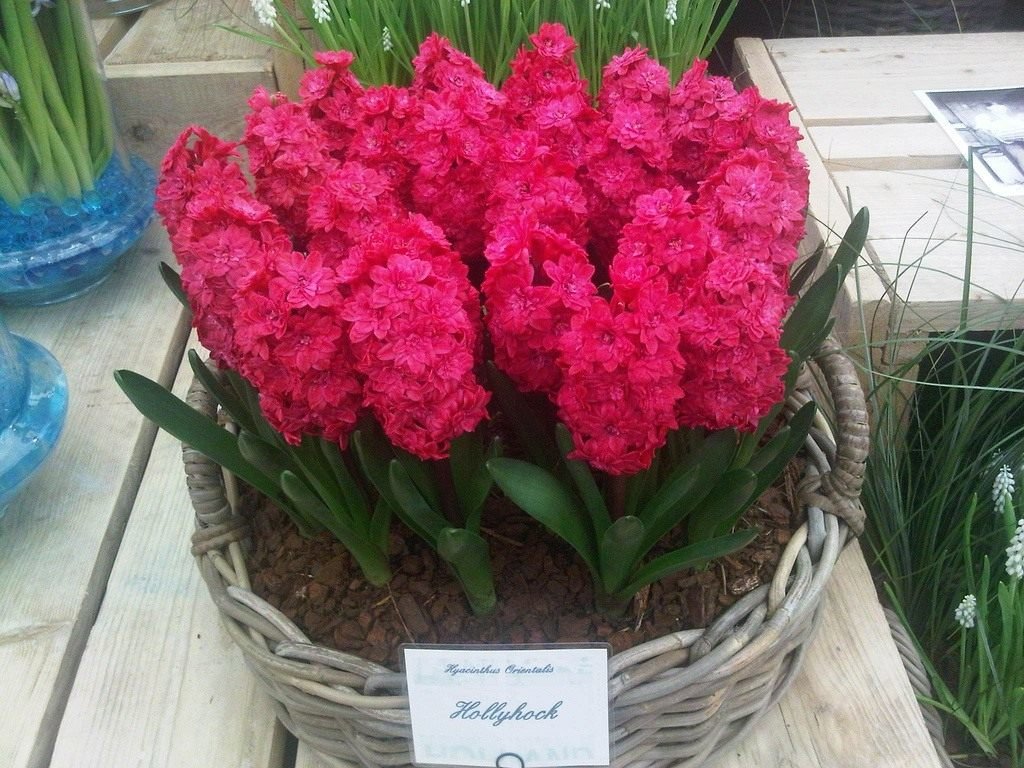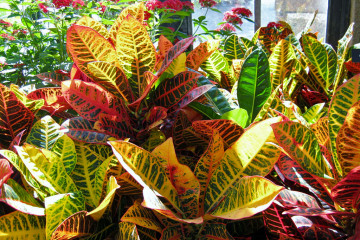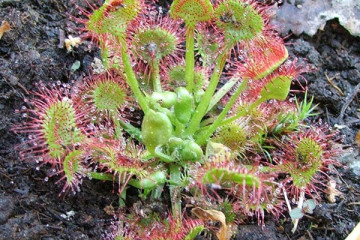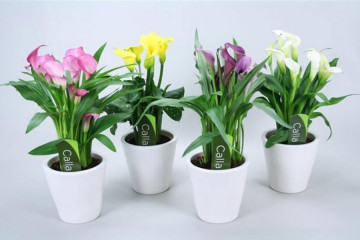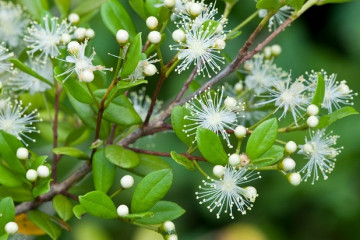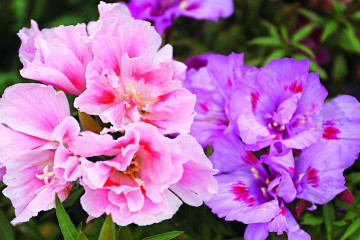Hyacinths: flowers, plant, home care
Content:
The hyacinth flower amazes with its unusual inflorescence shape, riot of colors and wonderful aroma. The Dutch, who began to cultivate a flower in the 18th century, creating new varieties, called them by the names of their lovers, the names emphasized the features of the new variety. They immortalized the name of their compatriot, the great artist, the representative of the golden age of the Dutch school of painting - Rembrandt Harmenszoon van Dyck, giving this name to the "bluest" of hyacinths with a luxurious fragrant inflorescence of blue-violet flowers framed with white edging.
Hyacinth history: legends and myths
"Hyacinth" in Greek means "rain flower", there are many myths about its appearance.
Fanned by legends, slightly shrouded in secrets of their appearance, hyacinths flowers are considered flowers of love, fidelity, happiness and ... sadness. In Greece, it is called the flower of memory of Hyacinth, one of the gods of ancient Sparta, a beautiful youth who died during a competition with Apollo. Apollo, throwing a disc, accidentally hit them in the head of Hyacinth. Blood sprinkled on the ground, sprinkled on the green grass, after a while lilac-red flowers with a wonderful aroma grew in that place. Saddened Apollo named the flower after his deceased friend. This legend has remained the most famous interpretation of the appearance of the hyacinth for over a thousand years.
Much later, another legend appeared: when the Trojan War was going on, Ajax and Odysseus declared their right to the weapon of Achilles after his death. The Council of Elders took the side of Odysseus, this injustice struck Ajax, and he stabbed himself with a sword. From the drops of his blood, a hyacinth grew, the shape of the flower petals resembled the first letters of his name α (alpha) and Υ (upsilon).
Botanical description of the plant
What is hyacinth? It is a perennial herbaceous bulbous plant with a height of 20-40 cm.
What does hyacinth look like? Juicy bright green leaves are basal, narrow, linear, in the form of a groove, up to 20 cm long and up to 1.5 cm wide. On one plant, there are 4-8 pieces. They are evenly distributed around the bottom of the bulb. The flowering stem is a continuation of the bottom, this is the lower shortened part of the stem. After flowering, the entire aerial part dries up, a bud is formed inside the bulb, which grows, turning into a young bulb, and will bloom next year. Baby bulbs are formed in the corners of the leaves, they can be separated, but they will bloom only after a few years. Flowers are placed at the top of the stem, forming a brush. The brightly colored perianth is a bell-shaped funnel with bent petals.
The fruit formed after flowering has the shape of a leathery box with three sections, each containing 2 seeds.
Wild hyacinth in nature
In nature, wild hyacinths are found in Western Europe and the Mediterranean countries. Some species grow in the steppe regions of Iran and Turkmenistan, others inhabit the mountainous regions of these countries, distinguish between field and forest varieties.
The modest muscari flower is also credited to them, it is also called mouse hyacinth.The plant can be found in the Caucasus, Crimea, Asia Minor and southern Europe.
Types and varieties of hyacinths
Hyacinth is a plant of the Asparagus family. Previously, it was believed that there are 30 types and more than 500 varieties. Now, according to the new classification, only 3 types are distinguished:
- Eastern, the most common, on the basis of which cultivars are created. Habitat - the territory of Greece and the Balkan Islands.
- Litvinova - is distinguished by its beauty, it grows in the steppes of Iran and Turkmenistan.
- Transcaspian - has a large height and 2 peduncles, the palette is limited to bluish and bluish shades. The native land of the plant is the Kopetdag mountain system, part of the Turkmen-Khorasan mountains.
These three species are basic for the creation of numerous varieties and varieties.
Generally, cultivars are grown as annuals.
Oriental
This species belongs to perennials, grows up to 30 cm high. The surface of bright green belt-like leaves is slightly bent by grooves. The peduncle is erect, cylindrical in shape, the number of flowers reaches 35. Fragrant flowers appear in mid-April and bloom for a month. There are double and simple varieties, their shape is bell-funnel-shaped and bell-shaped. There are varieties of yellow, pink, blue, purple flowers. Flowering continues for 2 weeks, fruit-boxes are formed in place of flowers.
The species is especially loved by flower growers because of its special property - the ability to forcing, when they achieve accelerated growth and abundant flowering of the plant outside of working hours for it.
The oriental species has served the emergence of more than a thousand varieties, and their number is increasing from year to year, this is the only progenitor of the currently existing varieties.
Hyacinth Jan bos
A magnificent primrose with lush inflorescences of dark crimson flowers, fragrant with a delicate aroma, Jan bos hyacinth, blooms in March or May, depending on the climate of the region. Leaves are belt-shaped, glossy, bright green. The inflorescence is dense, consisting of 18-26 flowers. The flowering period is 2-3 weeks.
Prefers warm sunlight or a slightly shaded place without wind and drafts. Suitable for forcing, for cutting and planting in open ground. Hyacinth Jan bos requires annual bulbs digging.
Hyacinth Woodstock
Bred in Holland in 1992, Woodstock hyacinth (Woodstock hyacinth) belongs to the large-flowered garden class of hyacinths. Blooms in March-April. It differs from other varieties in its dense purple-lilac color with a ruby tint and a very persistent aroma. Flowers in the form of small bells densely cover the peduncle. Abundant flowering, lasts 1-3 weeks. The bulbs are large, easily take root and sprout amicably.
Hyacinth Gipsy queen
The rare and very beautiful light apricot color of the Gipsy queen hyacinth will not leave anyone indifferent. Its hard, waxy flowers with a pleasant, delicate aroma stay fresh longer. Flowering lasts up to 20 days. It is used for forcing in winter and spring, planted in pots and flower beds. The plant is light-loving, grows best on fertile neutral soil.
Wild hyacinth, or forest
Wild hyacinth has many names:
- Spanish screech.
- Hyacintoid.
- Scylla Spanish.
- Hyacintoides.
In Russia, little is known about it, in Europe it is a fairly popular flower. It belongs to perennial bulbous plants. Leaves are glossy, smooth, elongated, collected in a basal rosette. The peduncle is high, it grows later than the leaves. The racemose inflorescences consist of 4-20 small bell-shaped flowers. Their colors are quite varied and include colors:
- White.
- Pink.
- Blue.
- Purple.
The time of its flowering coincides with the flowering of the present, the duration is two to three weeks, but the inflorescence is not as dense as that of the present, and resembles lilies of the valley, which was the reason for the appearance of another name - colored lilies of the valley.The smell is usually absent, but some species exude a subtle delicate aroma. After the end of flowering, a month later, the aerial part turns yellow and dies off, which happens in all bulbous plants.
Hyacinth Blue jacket
One of the early blooming (March-April) new varieties - Blue jacket hyacinth, forms a lush large cylindrical inflorescence. The flowers of Jackets are lilac-blue, brighten along the edge of the tone, similar to stripes. There are up to 40 of them per inflorescence. The aroma is pleasant, but strong enough. Flowering lasts up to 15 days. The plant is light-loving, its winter hardiness is low.
City of harlem hyacinth
The extremely bright and charming City of Harlem hyacinth belongs to the large-flowered varieties. It occupies one of the first places among plants suitable for forcing and planting on flower beds in spring. Blooms in March-April for about 20 days, creating lush bright yellow inflorescences. Grown as an indoor flower and a garden plant. Prefers sunny or slightly shaded places.
Hyacinth Yellowstone
Yellowstone is a late decorative variety, representative of the large-flowered group. The inflorescence of Yellowstone hyacinth consists of 30-40 star-shaped flowers of light yellow color with a strong odor. Blooms in May for up to 20 days. The variety is resistant to adverse weather conditions, suitable for early forcing and flower arrangements.
Hyacinth Carnegie
It is one of the rare varieties with wonderful delicate paper-white flowers. Carnegie hyacinth has a regular inflorescence up to 20 cm high with up to 30 flowers. The flowers are stellate, with wide perianth lobes. Carnegie is unpretentious, grows well in open ground in sunny and slightly shaded areas, and is grown as a houseplant. Used for forcing, planting on flower beds, good for cutting.
Hyacinth Anna Lisa
The hyacinth Anna Lisa has large, delicate, mother-of-pearl, pink-lilac inflorescences with a darker stripe in the center of the petal. The variety is suitable for growing outdoors, outdoors, and as a potted houseplant. It is considered one of the best for forcing. In the open air, it throws out inflorescences at the end of April and blooms for 18-20 days.
Hyacinth Pink Pearl
Long matte leaves are distinguished by bright greenery. Amazing bright pink dense inflorescences with star-shaped flowers, the petals of which are gracefully elongated and have an unequal color: in the center - bright, delicate along the edge. Begins to bloom in March-April, flowering lasts up to 3 weeks.
The variety is the most popular among the oriental species. It is grown in a garden, in a pot on a windowsill, or in a hanging planter on a balcony.
Hyacinth Vurbak (Vuurbaak)
The word "Vuurbaak" is translated as "lighthouse". The name of the variety justifies its vibrant color. Inflorescence in the form of a dense brush, spherical-cylindrical in shape. Peduncle with double bell-shaped bicolor flowers of extremely rare color: red-pink in the center and coral or pale pink along the edge. This variety is distinguished not only by the beauty of the flower, but also by the possession of the strongest and most persistent aroma.
Hyacinth Splendid cornelia
The cultivar is well known among flower growers and has even received an award for its wonderful color, shape and aroma. The dense inflorescence has a cylindrical shape, slightly tapering at the top. The flowers are pink-lilac in color with a darker center and a light edging around the edge.
Hyacinth Hollyhock
Of all the varieties, Hollyhock blooms last. The leaves are dark green, the rosette is well developed. Dense inflorescences of an oblong-oval shape reach 17 cm. A distinctive feature is the large double flowers of an amazing red-crimson color.
Hyacinth care at home
The result of the selection of oriental hyacinth is the overwhelming majority of the most popular varieties, cultivation and care for them is carried out according to the same rules.
Home care hyacinth requires the same as when growing in the garden. He needs to create an environment close to his natural growing conditions, and change them according to the seasons.
In spring, the hyacinth, when it blooms, needs abundant watering and feeding.
How to care for hyacinth in summer? The flower rests, the dug out bulb is stored in a cold place until autumn planting.
Watering and humidity
An important component of care is watering, abundant, but rare.
The flower loves a dry, well-ventilated room.
Location and lighting
In autumn, the bulbs are planted in pots and placed in a dark place. In winter, after the emergence of seedlings, the lighting is gradually increased. When the sprouts rise 2.5 cm, they are rearranged in partial shade.
The pot is installed on a southern or southeastern window sill closer to natural sunlight, avoiding direct rays, and away from heating appliances. If the windows face north, the pot can be placed in the center of the room.
Problems of growing hyacinths
Sometimes changes in appearance are observed:
- Yellowing of the leaves, caused by a draft or water ingress into the outlet when watering.
- Leaf withering is caused by insufficient lighting.
- Buds fall off when the temperature changes abruptly and water gets on the bud.
- Blooming stops due to heat.
- Rotting of the bulbs occurs due to the constant waterlogging of the soil.
Occasionally, the plant is affected by yellow bacterial rot; it cannot be saved.
Pests (spider mites and nematodes) are fought using insecticides.
In ancient times, people believed in the magical properties of hyacinth. It was believed that inhaling its aroma clears the thoughts of a person, adds vitality, protects against enemies, and inspires poets. If this is not entirely true, everyone makes up for the beauty of the bright inflorescences and their delicate aroma.
Video
